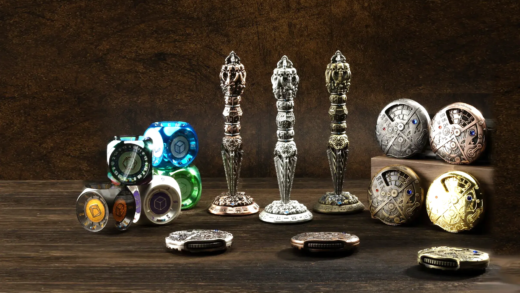Explore various types of poultry, preparation tips, cooking methods, common mistakes, and creative recipes. Learn about storing leftovers and nutritional benefits of poultry in your diet.
Types of Poultry
Cooking poultry is a culinary adventure that opens up a world of flavors. The most common types of poultry include chicken, turkey, duck, and quail, each bringing unique tastes and textures to the table.
- Chicken: The most versatile poultry, chicken is popular in various cuisines, from fried chicken in the U.S. to coq au vin in France. Its mild flavor makes it easy to pair with a variety of seasonings.
- Turkey: Often associated with festive occasions, turkey has a richer flavor than chicken. It’s commonly roasted, but also works well in soups and salads.
- Duck: With its distinct, rich flavor, duck is often used in gourmet dishes. The skin can become wonderfully crispy, making it a favorite for roasting.
- Quail: A smaller, more delicate option, quail is often served whole. Its tender meat is ideal for elegant presentations.
Understanding the characteristics of each type helps in selecting the right poultry for your dishes, enhancing both taste and presentation.
Preparing Poultry
Properly preparing poultry before cooking is crucial for achieving delicious results. Here are essential steps to get your poultry ready:
- Cleaning: Rinse the poultry under cold water to remove any residue. Pat it dry with paper towels to ensure a good sear.
- Trimming: Remove excess fat and any unwanted parts. This not only improves flavor but also helps in even cooking.
- Marinating: Consider marinating your poultry to infuse flavor and tenderize the meat. A simple marinade can include oil, vinegar, herbs, and spices.
These steps ensure that your poultry is not only safe to cook but also bursting with flavor.
Best Cooking Methods
The best cooking methods for poultry vary based on the type and desired outcome. Here are some top methods:
- Roasting: Ideal for whole birds, roasting creates crispy skin and juicy meat. Use a meat thermometer to check doneness.
- Grilling: This method adds a smoky flavor, perfect for chicken and turkey. Marinate beforehand for enhanced taste.
- Frying: Deep-frying is a popular method for chicken, resulting in a crispy exterior. Always ensure the oil is hot enough to prevent sogginess.
- Braising: A slow cooking method, braising is great for tougher cuts of poultry. It involves cooking in liquid, resulting in tender meat.
Utilizing these cooking techniques can elevate the flavor and texture of your poultry dishes, making them irresistible.
Common Mistakes in Cooking Poultry
Cooking poultry can be tricky, and many people make common mistakes that can lead to disappointing results. Here are some frequent pitfalls and how to avoid them:
- Not Thawing Properly: Cooking frozen poultry can result in uneven cooking. Always thaw poultry in the refrigerator, not at room temperature, to ensure even cooking.
- Skipping the Marinade: Many overlook marinating poultry. A good marinade enhances flavor and tenderness. Even a short soak can make a big difference.
- Overcrowding the Pan: When frying or roasting, overcrowding can lead to steaming instead of browning. Leave space for air to circulate around the poultry.
- Ignoring Internal Temperature: Relying solely on cooking time can lead to undercooked or overcooked poultry. Always use a meat thermometer to ensure safety.
Avoiding these mistakes will greatly improve your poultry dishes, ensuring they are safe and delicious.
Knowing When Poultry is Done
Knowing when poultry is fully cooked is essential for food safety and flavor. Here are some key indicators:
- Internal Temperature: The safest way to check is by using a meat thermometer. Poultry should reach an internal temperature of 165°F (75°C).
- Juices Should Run Clear: When pierced, the juices from the poultry should be clear, not pink.
- Visual Cues: The meat should no longer be translucent and should appear opaque and firm.
Using these methods will help ensure your poultry is cooked thoroughly, providing a safe and enjoyable meal.
Seasoning Ideas for Poultry
Enhancing the flavor of poultry can be achieved through various seasoning and marinade ideas. Here are some delicious options:
- Herb and Garlic Marinade: Combine olive oil, minced garlic, and fresh herbs like rosemary and thyme for a fragrant marinade.
- Citrus Zest: Adding lemon or orange zest to your seasoning mix can brighten up the flavors and add a fresh twist.
- Spicy Blend: A mix of paprika, cayenne, and cumin can give your poultry a kick, perfect for grilling or roasting.
- Honey Mustard Glaze: Mix honey, Dijon mustard, and soy sauce for a sweet and tangy glaze that caramelizes beautifully when cooked.
Experimenting with these seasoning ideas can elevate your poultry dishes and impress your guests.
Storing Leftovers
Storing leftover poultry safely is essential to maintain its quality and prevent foodborne illnesses. Here are some best practices for storing cooked poultry:
- Cool Down Quickly: Allow cooked poultry to cool at room temperature for no more than two hours. Placing hot poultry directly in the fridge can raise the temperature inside, potentially causing other foods to spoil.
- Use Airtight Containers: Store leftover poultry in airtight containers to prevent moisture loss and contamination from other foods. This helps maintain flavor and texture.
- Label and Date: Always label containers with the date of storage. Leftover poultry is best consumed within 3-4 days. After this time, it’s safer to discard it.
- Freezing for Longer Storage: If you need to store poultry for more than a few days, consider freezing it. Wrap it tightly in freezer-safe packaging, and it can last for up to 4 months in the freezer.
By following these guidelines, you can enjoy your leftover poultry safely and deliciously.
Creative Recipes
Looking for inspiration? Here are some unique and tasty poultry recipes that will encourage you to try new dishes:
- Stuffed Chicken Breast: Fill chicken breasts with spinach, cream cheese, and sun-dried tomatoes, then bake until golden. It’s an elegant dish perfect for dinner parties.
- Honey Garlic Duck: Marinate duck breasts in a mixture of honey, garlic, and soy sauce, then pan-sear for a crispy finish. Serve with steamed vegetables for a delightful meal.
- Quail with Wild Rice: Roast quail with herbs and serve over a bed of wild rice mixed with cranberries and pecans for a gourmet touch.
- Turkey Tacos: Shred leftover turkey and mix with taco seasoning. Serve in corn tortillas with fresh toppings like avocado and cilantro for a fun twist on taco night.
These recipes are not only delicious but also showcase the versatility of poultry, making mealtime exciting.
Cooking Time Variations
Cooking times for poultry can vary significantly based on the type and cut. Here’s a quick guide to ensure you cook your poultry perfectly:
- Whole Chicken: Roast a whole chicken at 375°F (190°C) for about 20 minutes per pound.
- Chicken Breasts: Cook boneless, skinless chicken breasts at 375°F (190°C) for 25-30 minutes, depending on thickness.
- Turkey: A whole turkey requires about 13-15 minutes per pound at 325°F (160°C).
- Duck: Cook duck breasts at medium heat for 6-8 minutes per side for a medium-rare finish.
- Quail: Roast quail for about 15-20 minutes at 375°F (190°C) for best results.
Adjust cooking methods and times accordingly to ensure each type of poultry is perfectly cooked and safe to eat.
Nutritional Benefits of Poultry
Including poultry in your diet offers numerous nutritional benefits. Here’s what makes poultry a great choice:
- High Protein Content: Poultry is an excellent source of lean protein, which is essential for muscle growth and repair.
- Rich in Vitamins: Chicken and turkey provide essential B vitamins, including B6 and B12, which support energy metabolism and brain function.
- Low in Fat: Skinless poultry is low in saturated fat, making it a heart-healthy option when compared to red meats.
- Versatile for Diets: Poultry can easily fit into various dietary plans, including low-carb and high-protein diets, making it a flexible food choice.
Incorporating poultry into a balanced diet can contribute to overall health and well-being, making it a valuable addition to your meals.





Comments are closed.